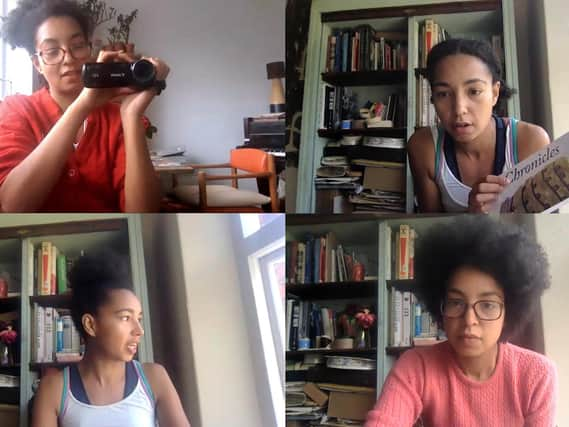Chronicle ia – a new film by Jade Montserrat for Scarborough Museums Trust


With a title that plays with processes of recording and documentation, the film explores the personal and inter-personal impacts of lockdown through the documentation of a collaborative making process, emphasising new ways of co-existing that are based on support. Working with artist filmmakers Webb-Ellis, through a series of digital conversations using the online platform Zoom, the film reveals the process of making through making.
The film, which will be around 13 minutes long, can be seen on the Museums Trust’s YouTube channel www.bit.ly/YouTubeSMT from Tuesday July 7
Advertisement
Hide AdAdvertisement
Hide AdFilmed during a period of physical and ‘social’ distancing caused by the COVID-19 pandemic, Montserrat searches for a methodology to apply Eve Sedgwick’s theory of reparative reading in a visual form – envisioning the interconnectivity of art practice, public space, responsibility and care. Together, Webb-Ellis and Montserrat interpret reparative reading as a process of decoding, describing and discussing imagery, visual and human relationships, to interrogate and challenge political structures and frameworks.
As Montserrat says in the film: “When 60,000 people are dead and a disproportionate amount are disabled, elderly and black and brown people, that’s a eugenic project… When is it that we rebel? When is it that we say no?”
Within the film are references to Scarborough Museums Trust’s collection of photographic images by James Harrison, taken during numerous hunting trips in Africa and India between 1892 and 1910, which includes debasing images of atrocities towards local peoples and the slayed bodies of innumerable animals. As Montserrat prepares to research this collection of photographs, diaries and taxidermy animals, she asks Webb-Ellis to explore this with her to sustain her through the trauma of engaging with the material as an act of mutual care.
Reflecting on the geographic, experiential, cultural and social spaces inhabited by the artists – filming is located in their respective isolations within Scarborough Borough – the film presents a discussion aiming to define global imaginaries that traverse histories, nations, ideologies and time to help us conceive a new world that is built on principles of equality, support and social justice.
Advertisement
Hide AdAdvertisement
Hide AdThe film’s imagery demonstrates glitches in communication, revealing how reparative reading involves a gradual – and sometimes incomplete – piecing together of practices and subjective viewpoints, but that, ultimately and beautifully, a common goal can be achieved.
As Scarborough Museums Trust continues to improve access to its online content, Chronicle ia includes audio descriptions embedded in the film as part of the creative process along with subtitles
. The film contains photographic documentation of colonial atrocities and explicit images of violence and nudity. Because of this, the Trust strongly recommends viewing for adults only, or those 12 years and over with parental or guardian supervision.